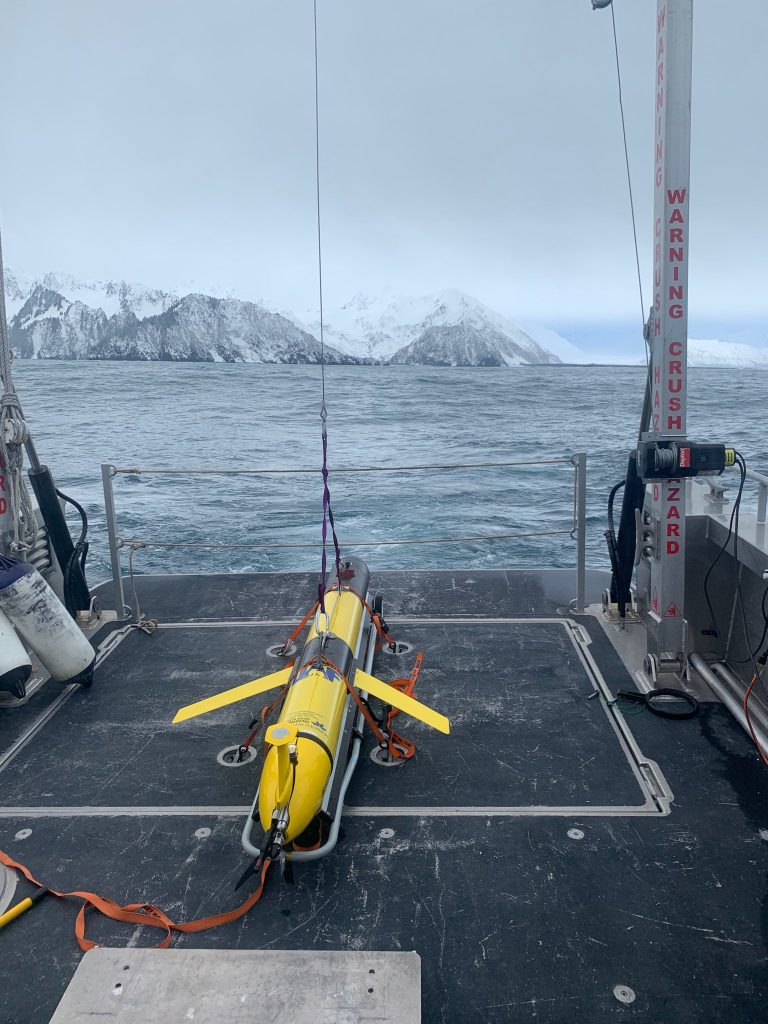Launching Gretel the Glider
John Horne, Director, Cooperative Institute for Climate, Ocean, and Ecosystem Studies (CICOES) Professor, School of Aquatic and Fishery Sciences University of Washington
We are happy to report that the echosounder-equipped, autonomous underwater glider, Gretel, was launched from the mouth of Ressurection Bay in the northern Gulf of Alaska on Feb 12, 2022. After technical adjustments, Gretel will have sampled in the southeast near the US vessel, the NOAA research vessel Bell M Shimada participating in the 2022 Pan-Pacific International Year of the Salmon High Seas Expedition.

The glider is equipped with a Kongsberg Simrad WBT mini echosounder operating at 200 kHz and an additional processor, an acoustic brain, that computes a suite of metrics to characterize biomass distribution in the water column. The Echometric suite is complemented by a coarse resolution echogram, a pseudogram, that shows the density of fish and zooplankton measured by the echosounder. The computation of Echometrics and the pseudogram values are an efficient way to represent voluminous acoustic data as they are transmitted through the limited bandwidth of a satellite connection. Acoustic and environmental data from an additional array of sensors can be transmitted every time the glider surfaces so that information is available during the glider mission (https://portal.aoos.org/).
The goal of the mission is to map the distribution of Pacific salmon and its potential prey field in the Gulf of Alaska during the winter. Little is known about salmon distribution and food habits during winter months when research vessels are not typically surveying during rough sea conditions.


The successful deployment of the glider is due to a collaboration between teams at the University of Washington and the University of Alaska Fairbanks, who have been supported by NOAA and the Alaska Ocean Observing System (AOOS).
Additional Factoids:
- Deployment 59o059’ N 149 o 22.693’ W on Feb 12, 2022 at 08:47 UTC
- First data received at 00:09:41
- The glider is a Teledyne Marine Slocum G2 glider (http://www.teledynemarine.com/slocum-glider?ProductLineID=14) custom modified to house the echosounder electronics in a science bay and the transducer in a flooded sensor bay.
- The glider is capable of diving to depths of 100m and returning to the surface by shifting its center of gravity by shifting the position of the battery bank and pumped air and oil-filled buoyancy bladders.
- Acoustic data are collected and stored on-board the glider with summary data exported to the acoustic brain for Echometric computation in real time. Data products are sent to shore via satellite at glider time (i.e. when the glider surfaces to transmit data using the Iridium satellite system).

Gretel was successfully recovered in Resurrection Bay, Alaska on April 11, 2022.
